Archaeology
Fort Edward National Historic Site
Archaeologists have worked at Fort Edward at various times between 1986 and 1999, uncovering artifacts that reveal interesting information about the fort and its occupants.
This work has been done for practical purposes, to clear areas for the stabilization of the blockhouse, for electrical wiring, and for the construction of paths.
Full excavation of the blockhouse interior
Plans to stabilize the foundation of the blockhouse led to a full excavation of the interior, plus the perimeter around the exterior.
Most surprising was the discovery that a massive amount of garbage had been thrown under the floorboards some time before the middle of the 19th century. Perhaps this was done to reduce the air space under the floorboards and maybe provide some insulation.
The Blockhouse midden: Treasures amid the garbage
Within the space below the floorboards, archaeologists found military buttons, shoe buckles, musket balls and gun flints, broken ceramic dishes and glass bottles, tobacco pipes, Jews’ harps, ink bottles and a wide variety of animal bones, discarded from meals. All of these seem to date to the first quarter of the 19th century.
Some of the items the archaeologists discovered
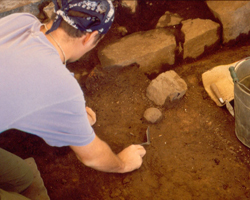
A cannonball lies in the dirt below the floorboards of the blockhouse, 1998. This seems to be part of fill taken from an early eighteenth-century midden (garbage dump) and placed inside the building, perhaps as insulation.
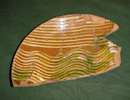
Anglo-American coarse earthenware dish with a slipped decoration.
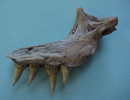
Jawbone of a monkfish (Lophius americanus), caught and eaten by soldiers of the garrison.
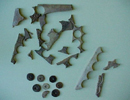
Soldiers cut bone discs from flat bones to replace buttons lost on their clothing.
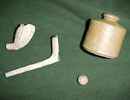
Tobacco pipes, an ink bottle and a clay marble
Before the blockhouse: Acadian Parish Church of l’Assomption
Archaeology has also confirmed the presence of the Parish Church of l’Assomption on the hilltop.
Something as mundane as the placement of security lights around the blockhouse led to the first evidence.
Deep in a small square excavated for the light fixture in the northwest bastion, archaeologist Stephen Powell uncovered pieces of clay, burnt in a fire, which clearly showed traces of salt-marsh grasses (spartina sp). This mixture of clay and spartina, called "torchis," was commonly used as insulation in Acadian houses.
Later excavations in the blockhouse revealed a layer of charcoal and torchis under dirt dug out for the building’s foundation. Clearly, the layer pre-dated the blockhouse.
As Jonathan Fowler of Saint Mary’s University has pointed out, Joshua Winslow recorded in his journal of June 1750, that the Acadians pulled down the Mass House (by then abandoned), to level the ground for the blockhouse.
Some of the items the archaeologists discovered
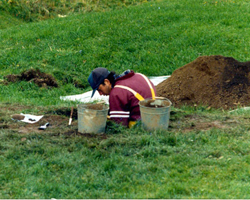
In 1986, archaeologist Stephen Powell discovers evidence of the Acadian church below the northwest bastion.
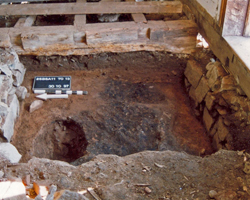
Below the floor of the blockhouse, a charcoal layer marks the original site of the Acadian Church of l’Assomption.
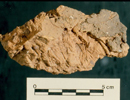
Torchis specimen.
View artifacts
A ten-minute walk down adjacent King Street leads you to the museum of the West Hants Historical Society.
Here you can view military buttons, cannon balls and other artifacts excavated from Fort Edward.
- Date modified :